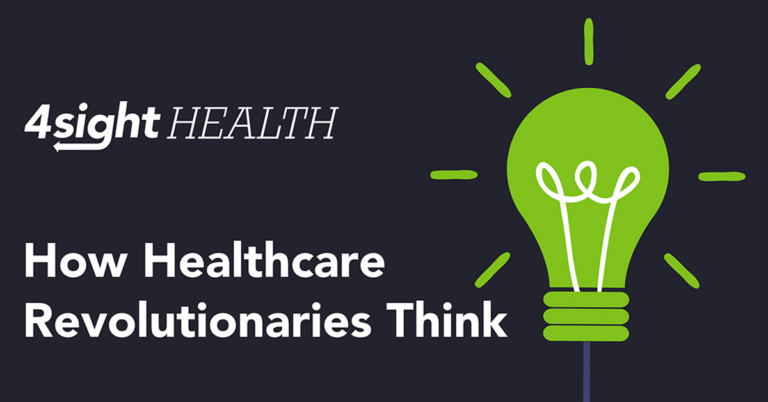October 1, 2019

If You Scroll Down, You’ll Find Out What Employers Really Think About Healthcare
With open enrollment about a month away at most businesses that offer health insurance benefits to their workers, it’s time to look at what employers are doing and not doing to deliver more healthcare value to their most important and expensive asset. That would be their people, just in case there’s any confusion. The insights come courtesy of the much-anticipated seasonal slew of reports and surveys by benefits consulting firms, trade groups and other interested organizations.
For each of the five consulting firms, trade groups and interested organizations identified below, I’ll tell you what made headlines and what you may have missed a little further down in their polls, reports and surveys.
Kaiser Family Foundation
✓ What you read: No doubt you read the big news from the Kaiser Family Foundation’s 2019 Employer Health Benefits Survey. The annual premium for employer-based family coverage topped $20,000 for the first time in 2019. It rose 4.9 percent to $20,576 this year from $19,616 in 2018. It rose 4.2 percent to $7,188 for single coverage. This year’s annual Kaiser Family Foundation employer benefits report is based on a survey of 2,012 employers.
What you may have missed: For the first time in its long series of annual surveys, KFF asked employers about the opioid crisis. Contradicting the widely accepted narrative, 76 percent of employers with 200 or more workers said the opioid crisis has had little or no impact on worker productivity. As a result, most companies aren’t doing much about it. Twenty-one percent of firms with 200 or more workers increased monitoring of opioid prescriptions, 8 percent required employees to obtain opioid prescriptions from a single provider and just 2 percent increased the number of in-network substance abuse providers in their health plans.
What you may have missed: Another question KFF asked for the first time was why a company didn’t offer a narrow provider network plan to its employees. Firms with 200 or more workers said the No. 1 obstacle was “employee considerations,” such as disruption and backlash, cited by 31 percent of the respondents. That was followed by access and convenience (21 percent), rural area/lack of providers (13 percent) and employees spread over a large geographic area (12 percent). The least cited reason was cost or quality of care (3 percent).
What you may have missed: Most employers also are feeling blasé about wearable technology, which advocates often characterize as one of the pillars of the healthcare system of the future. This year, 11 percent of all companies regardless of size offered workers a mobile health app or wearing health tech from which employer collected health data as part of a health and wellness program. That’s down from 18 percent last year.
Willis Towers Watson
✓ What you read: The top benefits challenge facing U.S. employers over the next three years is rising benefits costs, according to the 2019 Benefits Trends Survey released by Willis Towers Watson. Eight-two percent of the 400 U.S. companies surveyed by the firm cited benefit costs as their No. 1 challenge. That was followed by difficulty communicating benefit choices to employees (53 percent) and the different needs and wants of a multigenerational workforce (50 percent).
What you may have missed: Just 56 percent of the surveyed U.S. employers said “incorporating inclusion and diversity into their benefits program” was their highest benefits priority. Inclusion and diversity was a distant fourth behind “incorporating employee wellbeing into their benefits program” (80 percent), “aligning benefit provisions with employee wants and needs” (64 percent) and the ever-nebulous “enhancing work policies” (61 percent).
Mercer
✓ What you read: Mercer projected that the average total health benefits costs per employee will rise 3.9 percent in 2020. That’s a smaller increase than the 4.4 percent that Mercer projected for this year. The figures are from Mercer’s latest annual National Survey of Employer-Sponsored Health Plans. Mercer’s report is based on a survey of 1,511 U.S. employers.
What you may have missed: Technology platforms to help employees manage their chronic illnesses—and help employers manage their healthcare costs—are getting more popular. Sixty-two percent of surveyed firms with 500 or more employees offered tech-enabled disease management programs to workers this year, according to Mercer. That’s up from 55 percent who did so last year.
Aon
✓ What you read: Medical plan costs in the U.S. are projected to jump 6.5 percent in 2020, according to Aon’s 2020 Global Medical Trend Rates Report. Aon defines its “medical trend rate” as the amount health plans need to cover price increases, advances in medical technology, utilization changes and cost-shifting from social programs. The change in the rate is the consensus opinion of 105 Aon experts located in different countries around the world. Rising prices are the leading driver of the medical trend rate hike in the U.S., Aon said.
What you may have missed: Musculoskeletal/back problems were the No. 1 medical conditions pushing medical plan costs higher in the U.S., according to the experts from Aon. Bone, joint and back problems led, in descending order: cancer, heart disease, diabetes and hypertension. Sit up straight and lift with your legs, please.
National Business Group on Health
✓ What you read: Employers’ annual health benefits cost per worker will rise 5 percent to more than $15,375 next year, according to the National Business Group of Health’s 2020 Large Employers’ Health Care Strategy and Plan Design Survey. NBGH’s report is based on a survey of 147 large employers that provide health benefits to more than 15 million employees and their dependents.
✓ What you read: You probably also read that big employers want to implement more virtual care options for employees to reduce healthcare costs. Fifty-one percent of the companies said they plan to offer more virtual care models to workers next year. That tactic was followed by a more focused strategy on dealing with high-cost claims (39 percent) and expanding the use of centers of excellence for additional medical care and procedures (26 percent).
What you may have missed: What medical condition did the surveyed employers say is the top driver of their rising medical costs? If you scrolled down the Aon report, you’d know. The NBGH respondents said its musculoskeletal problems, too. Eighty-five percent of the companies cited it as one of their top three cost drivers. That was followed by cancer (74 percent), cardiovascular disease (37 percent) and diabetes (35 percent).
As all good journalists know, there’s always a story in the fine print. There are lots of great stories you may have missed in these five employer health benefits trend reports if you didn’t read until the end. They tell you what employers really care about and why. And why your company may be sending you out of state to get that knee or hip replaced.
Thanks for reading.





